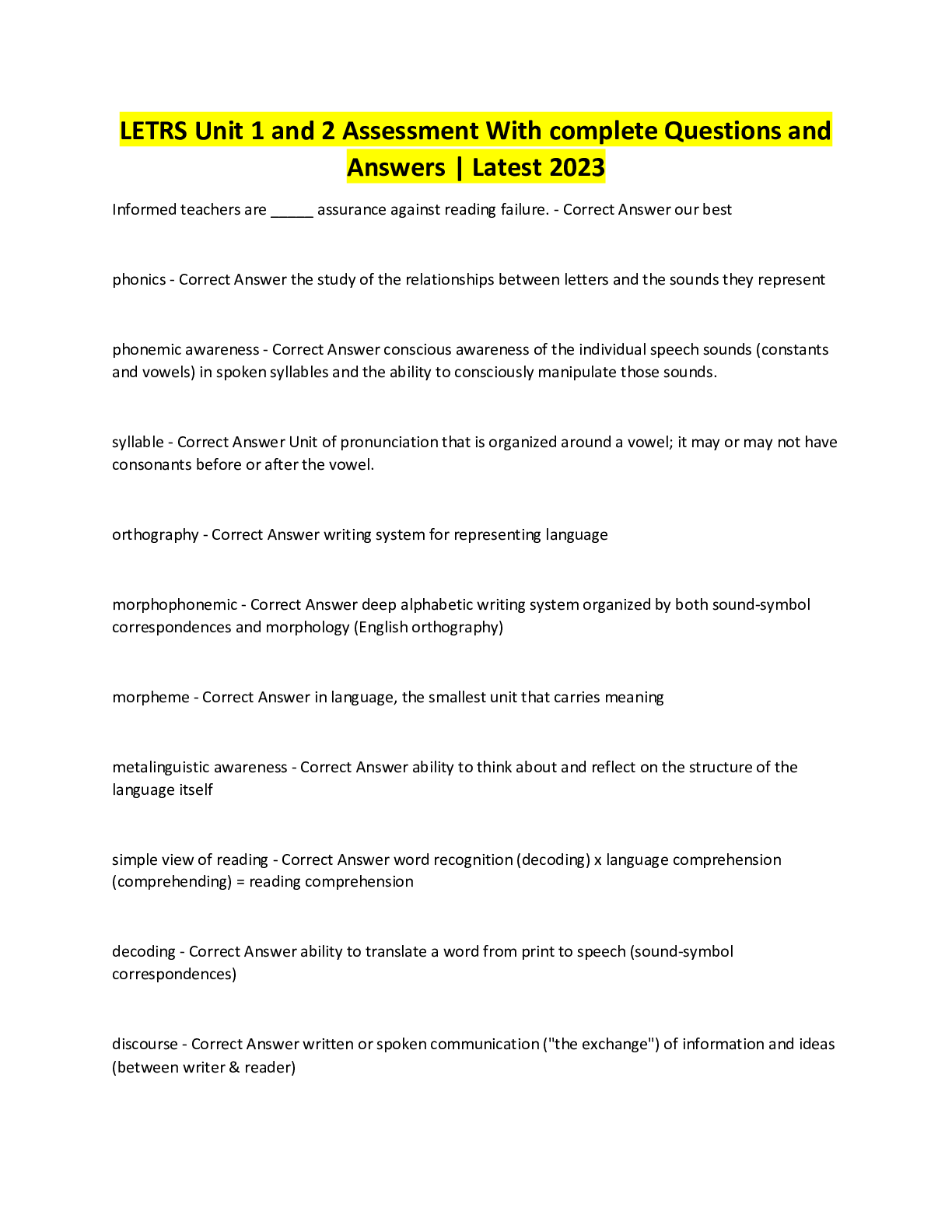Management > EXAM > MGMT 309 Final Exam - Questions and Answers (All)
MGMT 309 Final Exam - Questions and Answers
Document Content and Description Below
MGMT 309 Final Exam - Questions and Answers Corporate-Level Strategies Set of strategic alternatives organization chooses from while it manages operations simultaneously across several industries o... r markets. Diversification Strategy Part of Corporate-Level Strategies and refers to the number of businesses an organization engages in and extent of relatedness in businesses A. Single- Product Strategy: Only having one product and sells in one geographic market B. Related Diversification: Organization operates in several businesses that are somehow linked to one another C. Unrelated Diversification: An organization operates in many businesses that are not logically linked to one another. International and Global Strategies Very complex to manage Has advantages in allowing for more flexibility, more location efficiencies, and allows for worldwide learning. Has set of Strategic Alternatives: A. Home Replication Strategy: use core competency that was developed at home as main tool for success B. Multidomestic Strategy: company manages itself as a collection of subsidiaries within each domestic market C. Global Strategy: views the world as a single marketplace, standardizing products to fit needs of customers worldwide (Coca-Cola) Decision Making Choosing from a set of alternatives. 2 main types: 1. Programmed decision: A decision resulting from a fairly structured problem or one that recurs with some frequency 2. Unprogrammed decisions: relatively unstructured decisions that do not occur often and results from unplanned and complex events. States of Decision Making 3 states regarding decision making 1. State of certainty: knows what the alternatives are and the risks associated with each decision 2. State of risk: Availability and risk of each alternative is associated with a probability 3. State of uncertainty: A state where the full alternatives are not known and risks associated with the alternatives are unknown Rational Decision Making Process Assumes that managers are logical and rational while working for the best interests of the organization. Follows a six step structure Step 1: Recognize and define the situation Step 2: Identify Alternatives - Bigger the decision, more alternatives needed Step 3: Evaluate the Alternatives Step 4: Select the best Alternative Step 5: Implement the Alternative Step 6: Follow up and Evaluate the results Organizing Finding the optimal way to group activities and resources. Departmentalization Grouping jobs due to some logical arrangement. Functional Departmentalization Most common type, it groups employees by same or similar job activities. (Accounting, Marketing, Sales, Manufacturing) Product Departmentalization Groups activities by products or product groups Customer Departmentalization Grouping activities to respond to and interact with specific customers or customer groups Location Departmentalization Groups based on geography. Makes it easier to respond to environmental and customer challenges in a given area. Span of Management The number of people reporting to a manager. Two main types: Operative Span: Meant for managers handling operational tasks that require low skill in workers. Can manage up to roughly 30 employees Executive Span: Meant for managers handling upper managers, span is limited to 6-9 individuals Factors Influencing Span of Management 1. Competence of Supervisor and Subordinates 2. Physical Dispersion of subordinates 3. Extent of Nonsupervisory work in manager's job 4. Degree of Required Interactions 5. Extent of Standard Procedures 6. Similarities Between Tasks Supervised 7. Frequency of New Problems 8. Preferences of Supervisor and Subordinates Tall organization An organization with many levels of command in hierarchy. Each manager handles less people. Makes overall production slower. Flat organization An organization with fewer levels in the hierarchy. Leads to faster production yet less supervision. Organizational Change Any real modification to some part of the organization. Can be cause by External Forces (regarding organization's general and task environment) and Internal Forces (Such as sociocultural changes in the internal environment) Automation The process of designing work so it can be completely or almost completely done by machines. Types of Organizational Layout Product Layout: A layout designed to produce one product Process Layout: A layout designed to group processes Fixed-Position Layout: Multiple processes happening simultaneously around one fixed position Cellular: Families of products following similar patterns Product-Services Mix Determines what kind of products and services will be offered. Based on corporate, business, and marketing strategies. [Show More]
Last updated: 6 months ago
Preview 1 out of 13 pages
Instant download
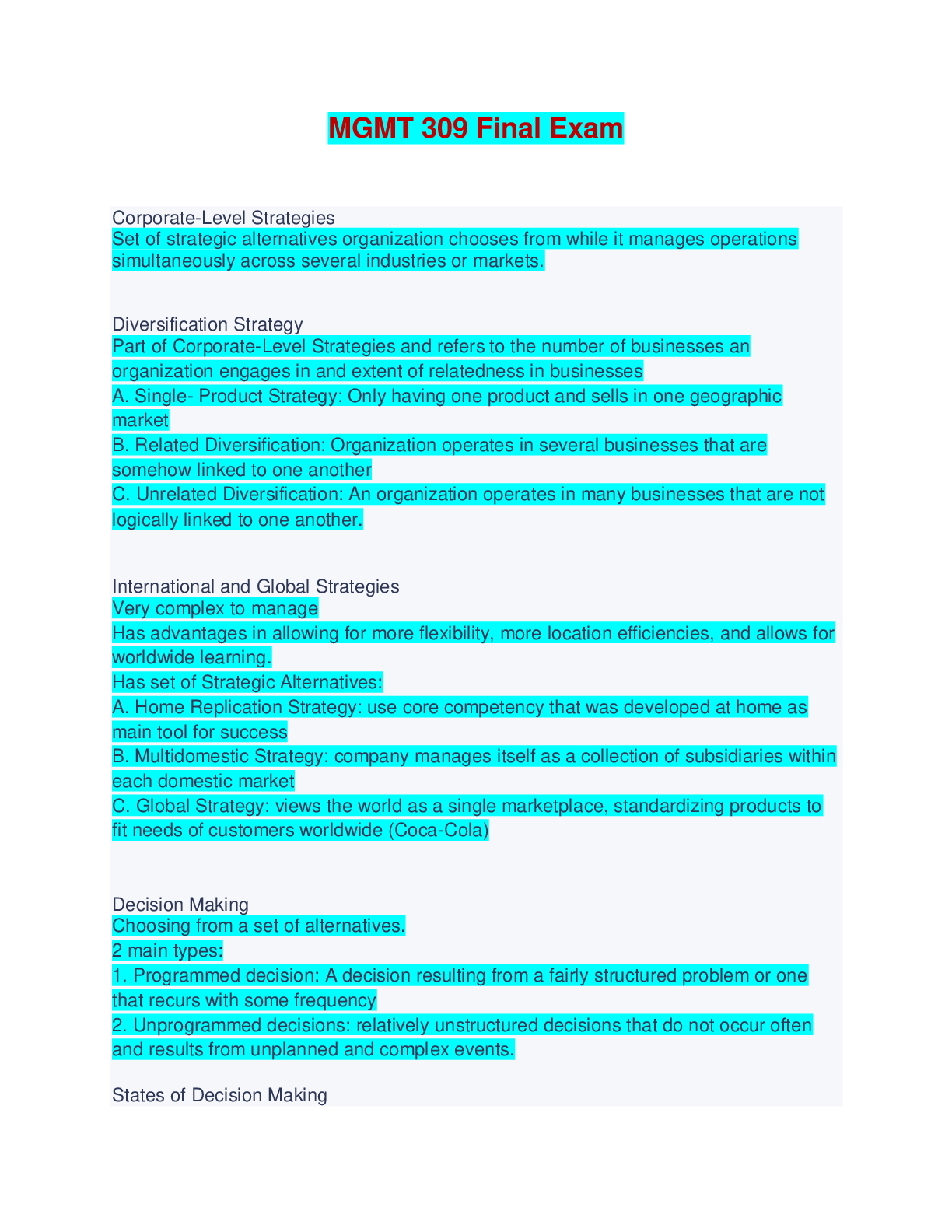
Instant download
Also available in bundle (1)

MGMT 309 EXAMS 1 - 4 & FINAL EXAM BUNDLE
MGMT 309 EXAMS 1 - 4 & FINAL EXAM BUNDLE
By Nurse Henny 6 months ago
$30
5
Reviews( 0 )
Document information
Connected school, study & course
About the document
Uploaded On
Nov 03, 2023
Number of pages
13
Written in
Additional information
This document has been written for:
Uploaded
Nov 03, 2023
Downloads
0
Views
19



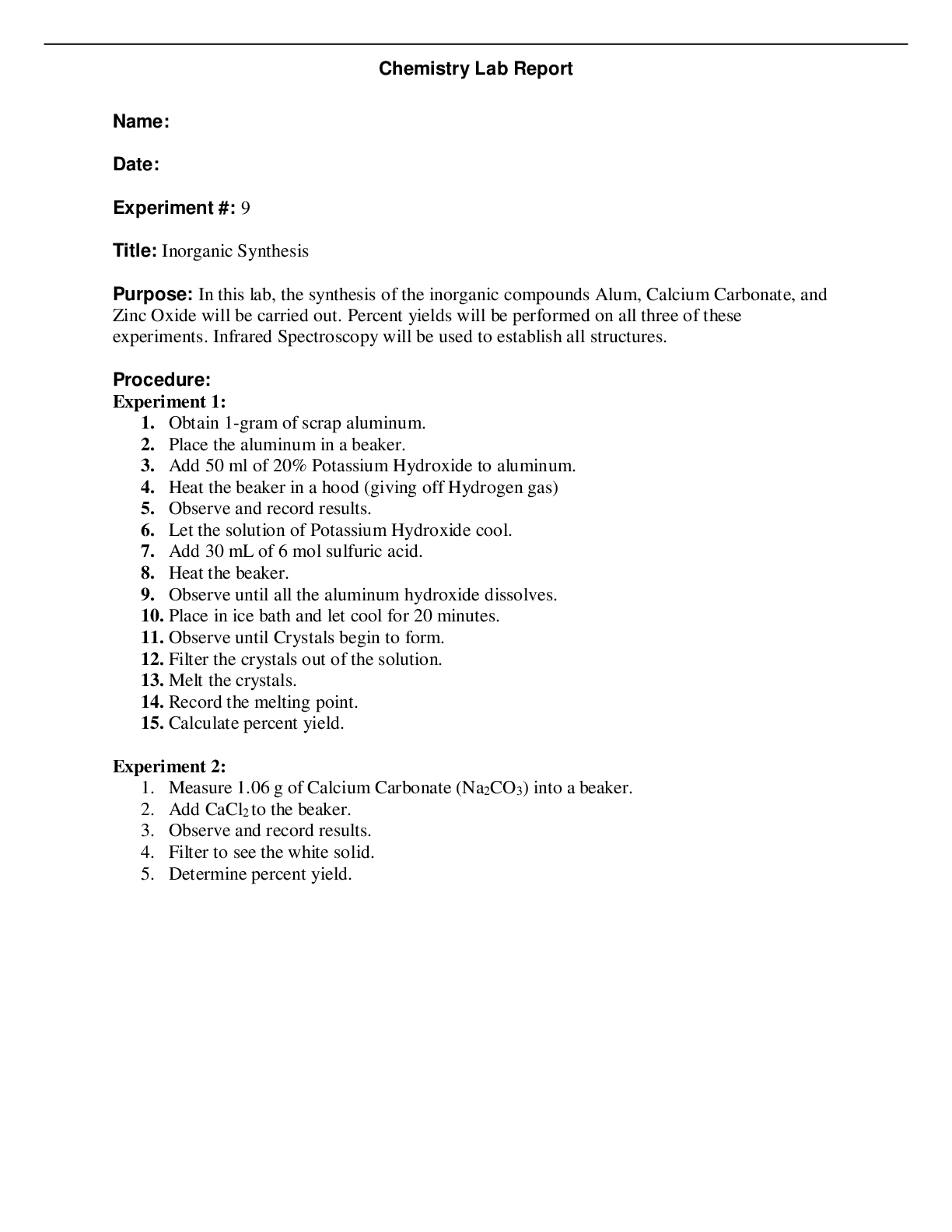
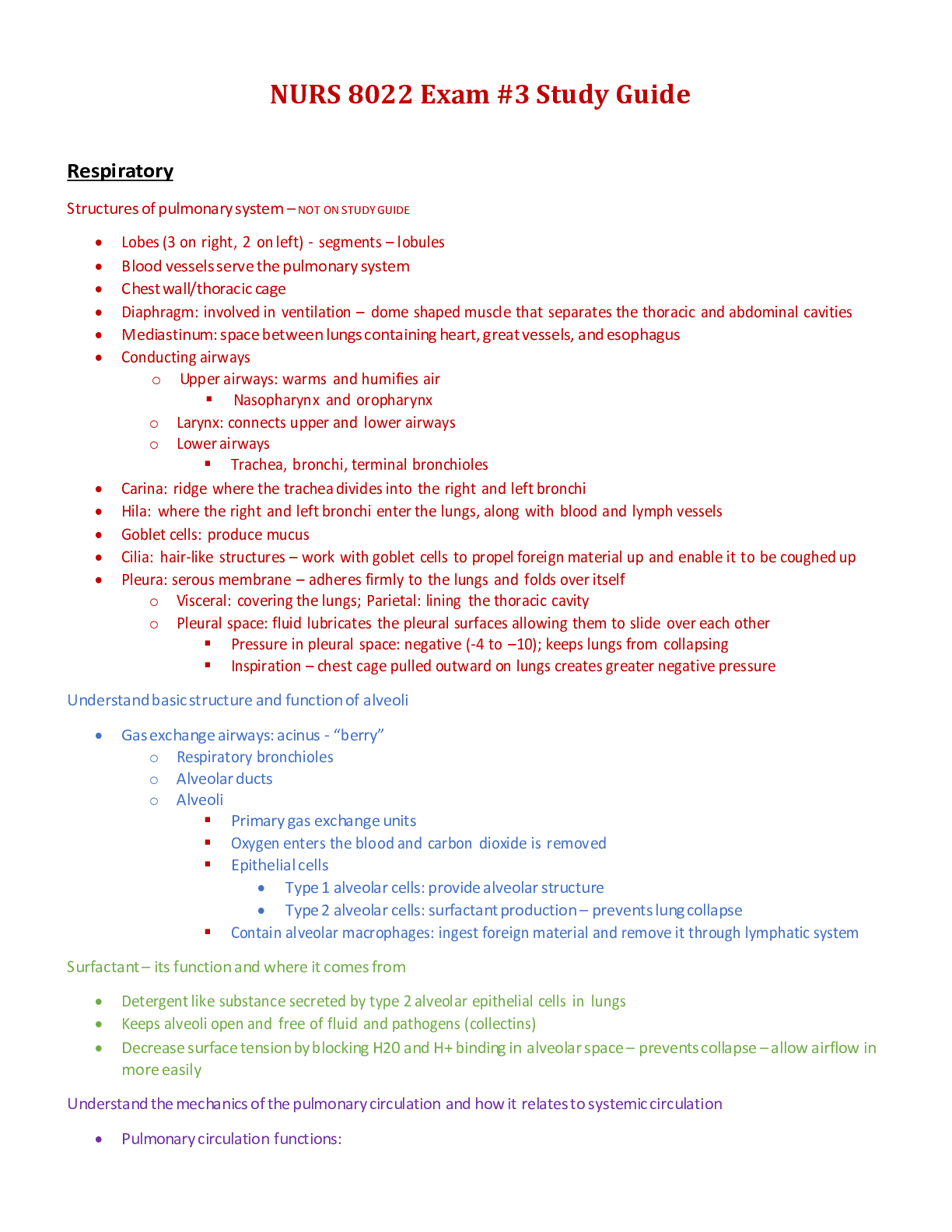


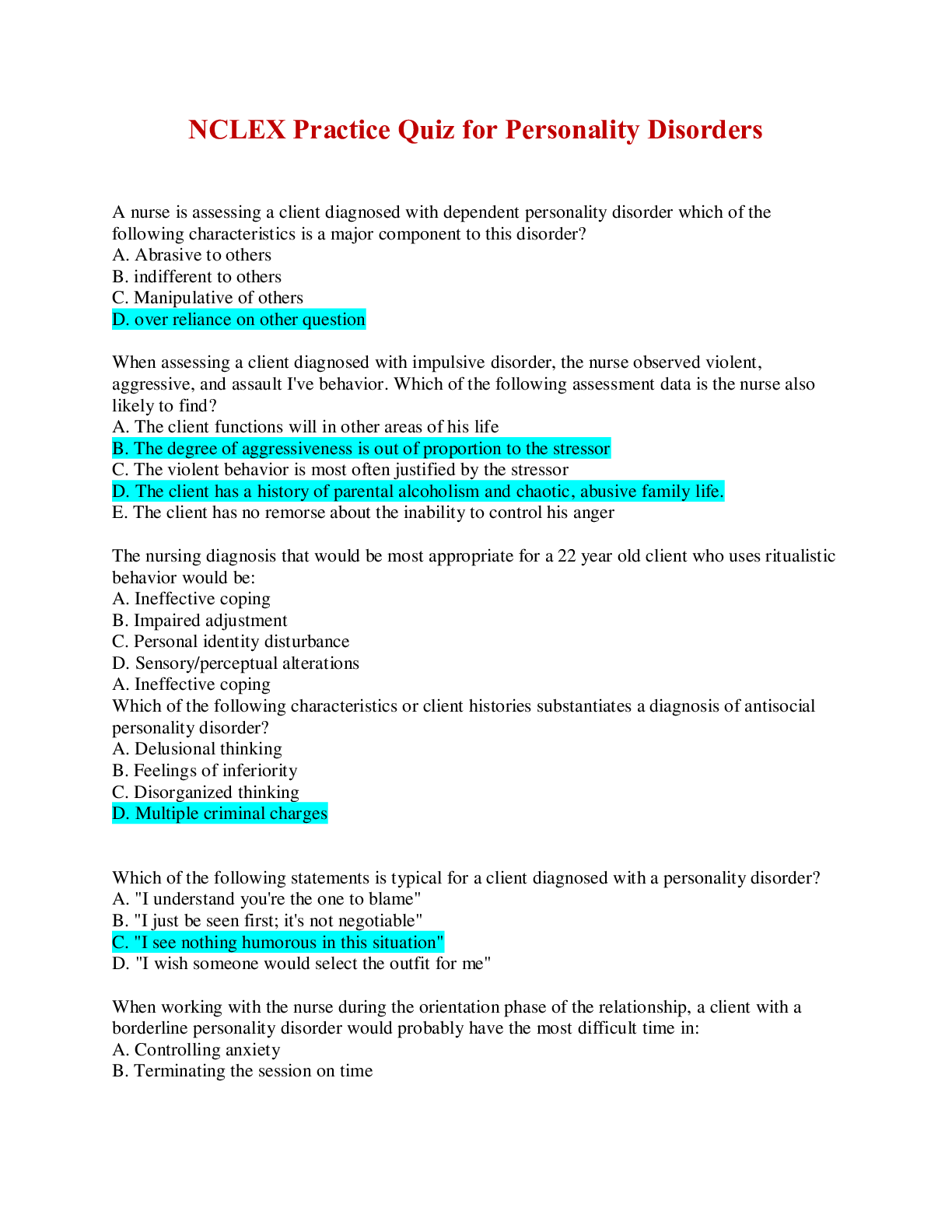



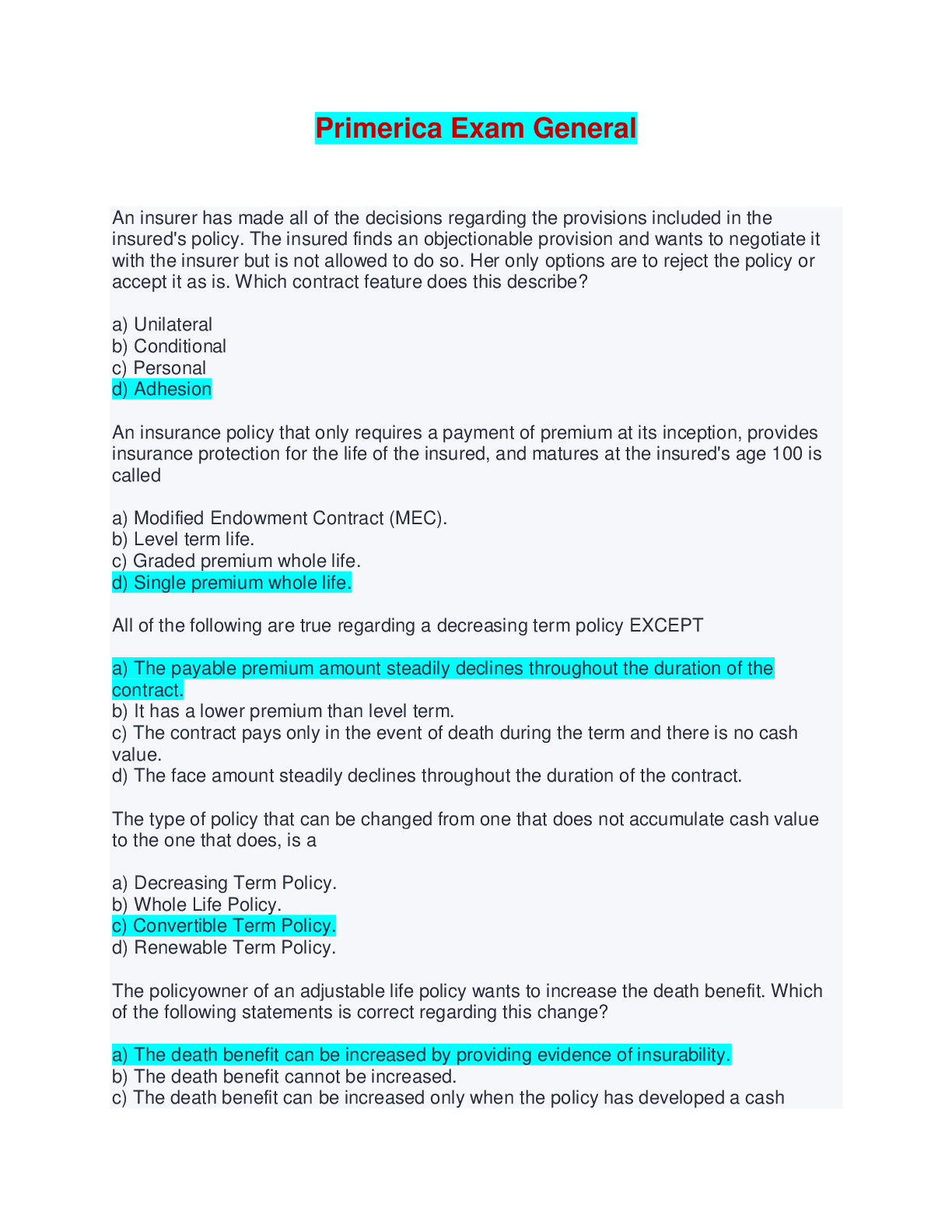

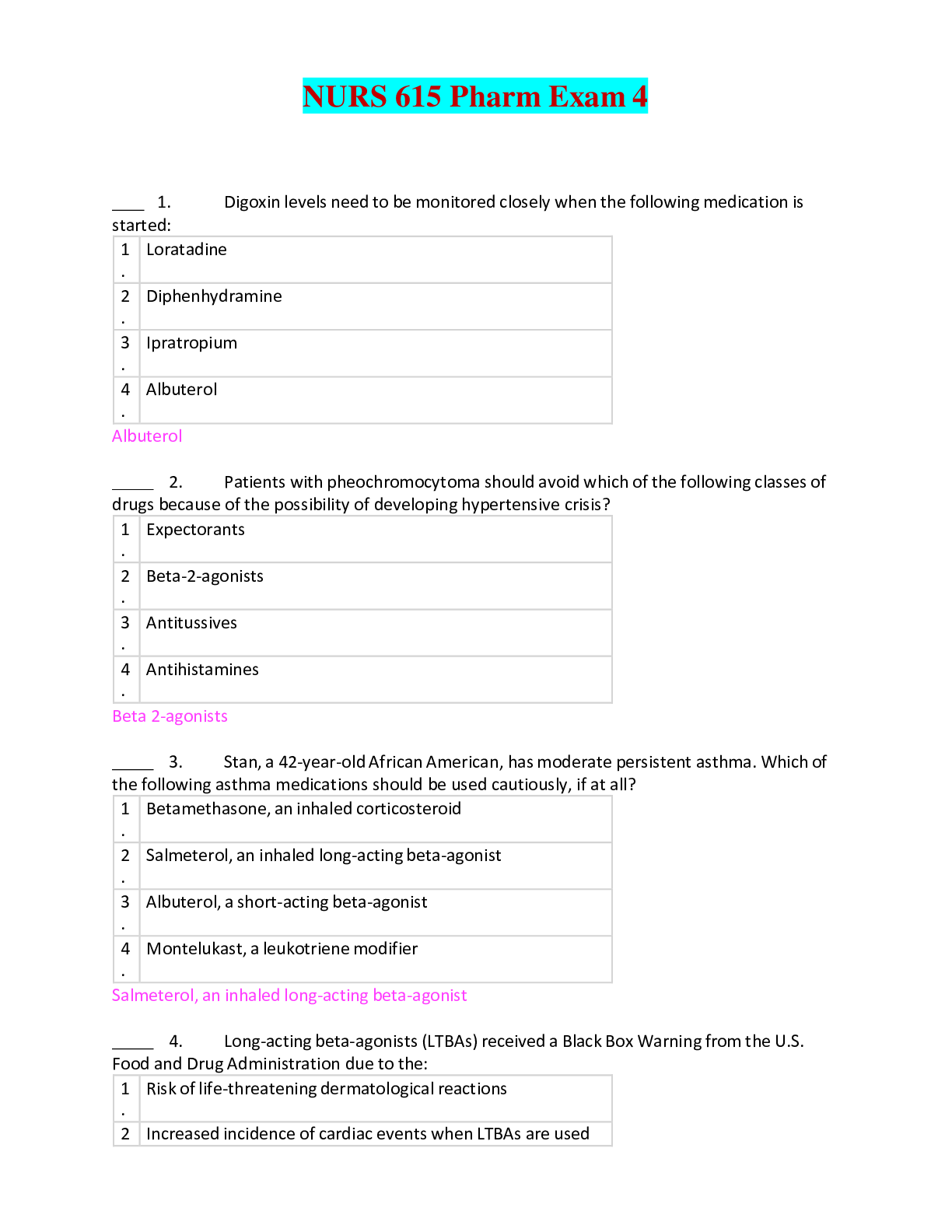
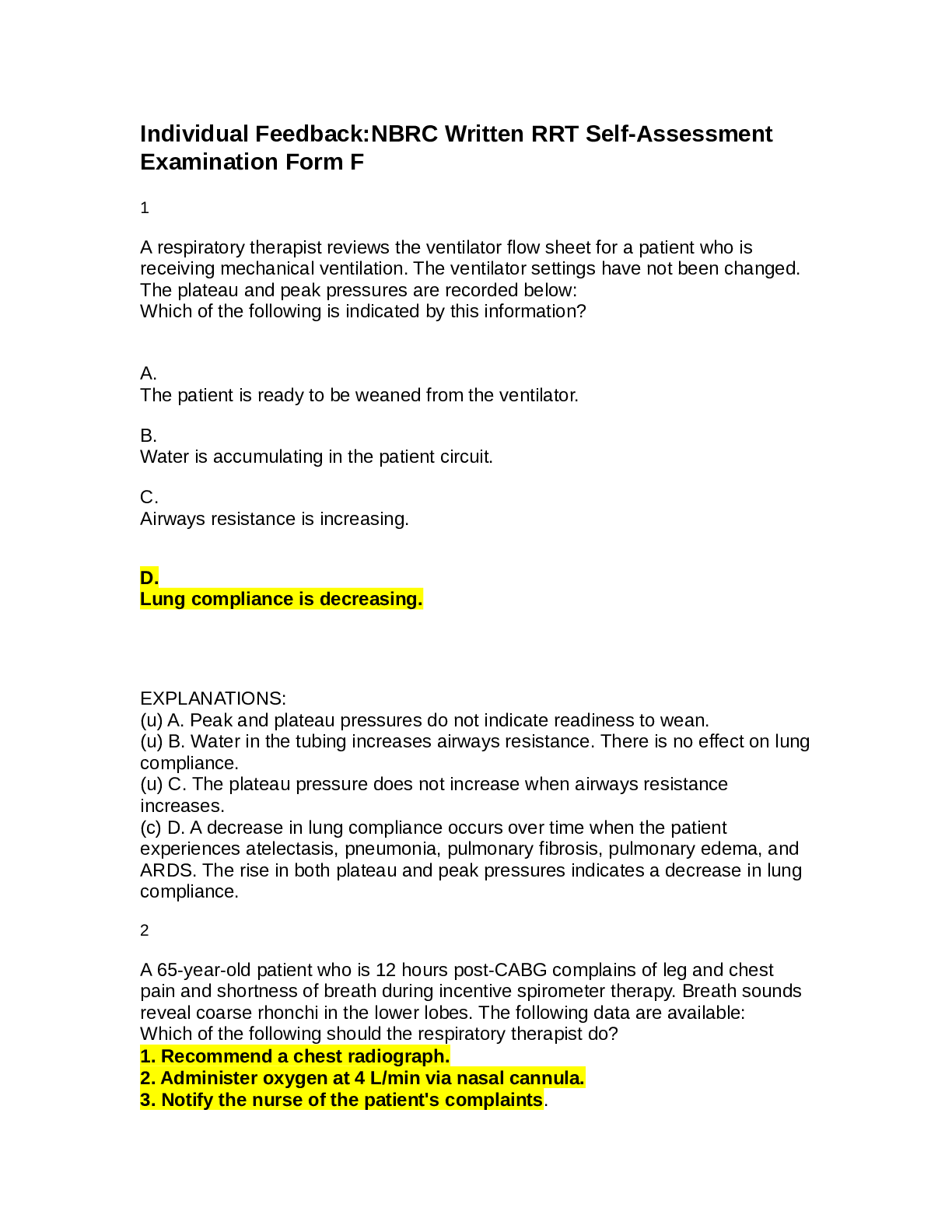
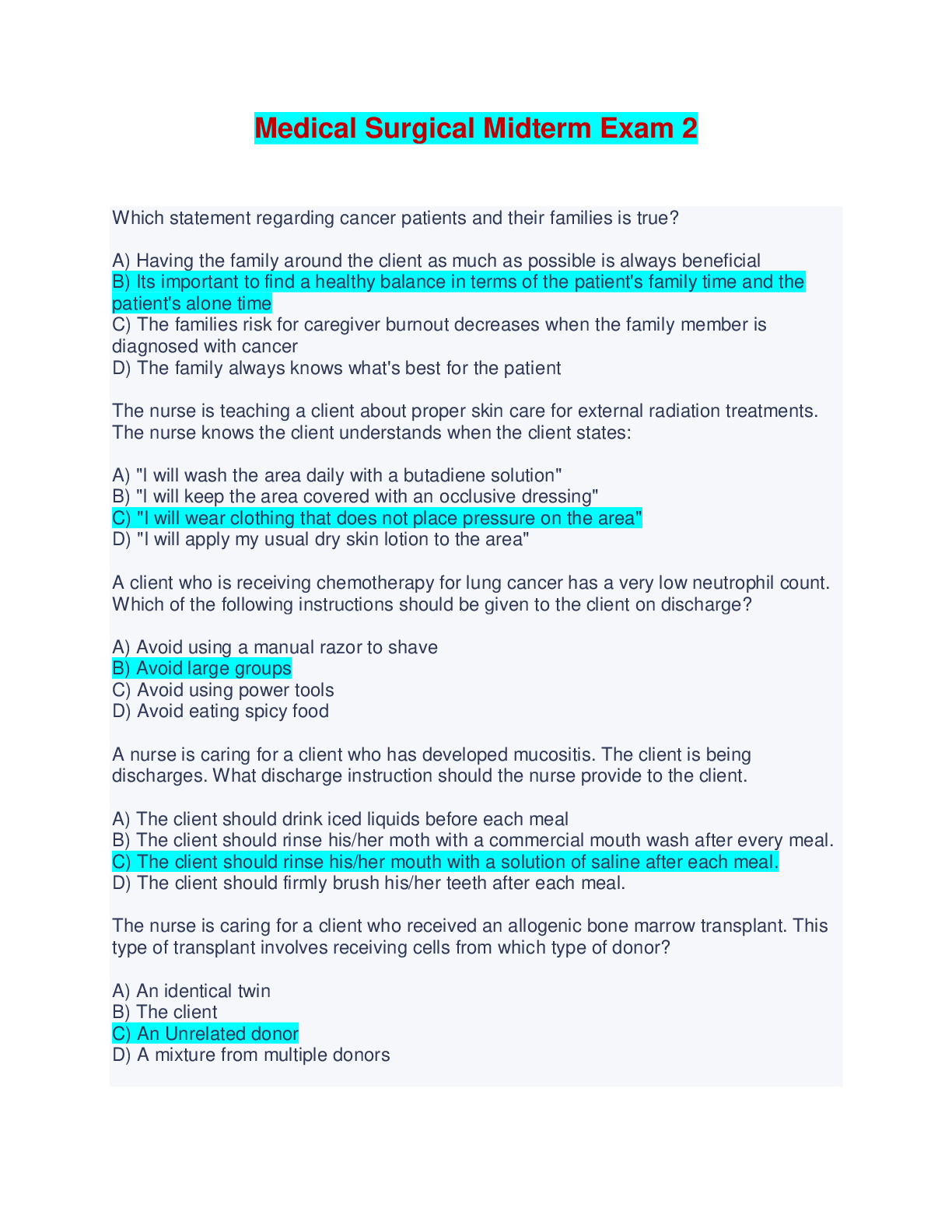
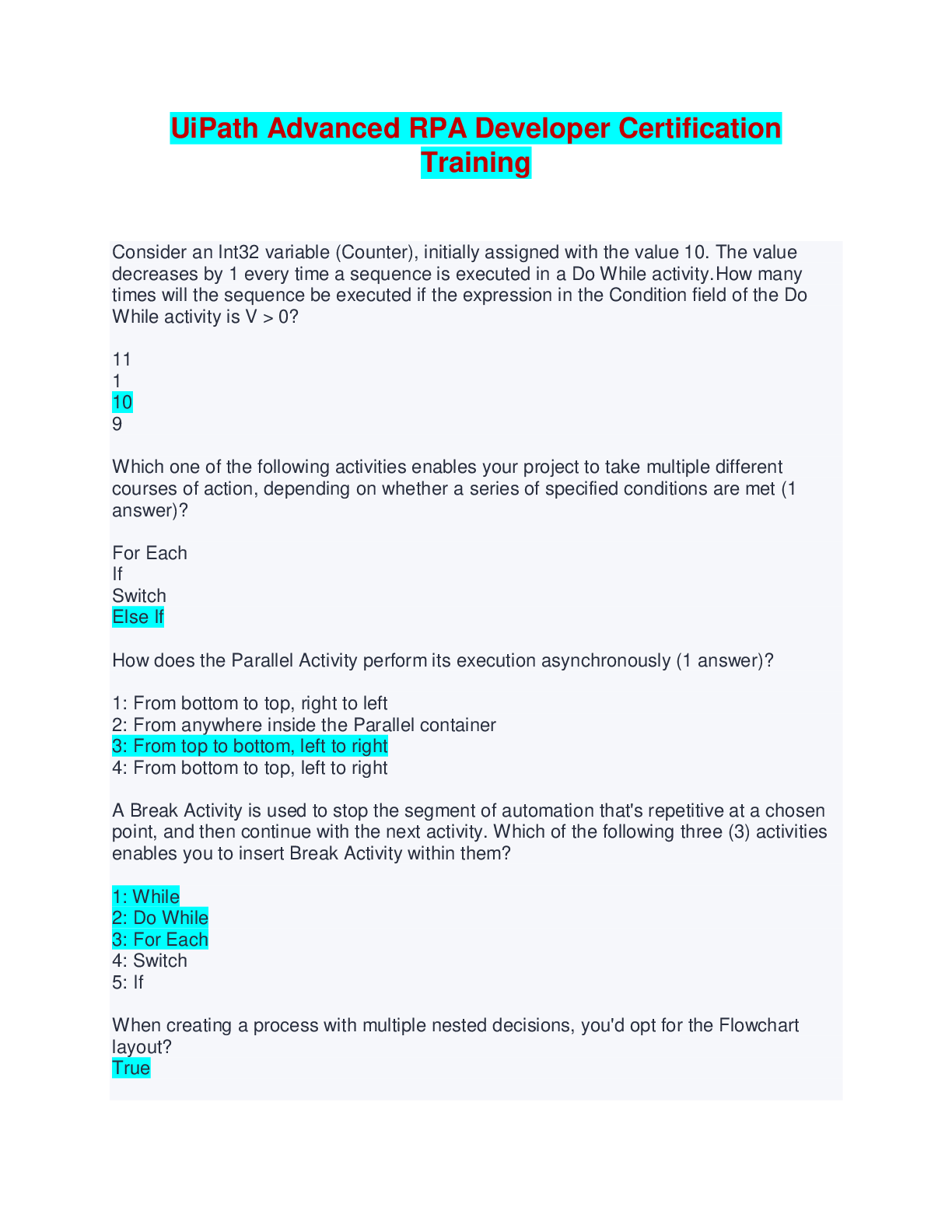

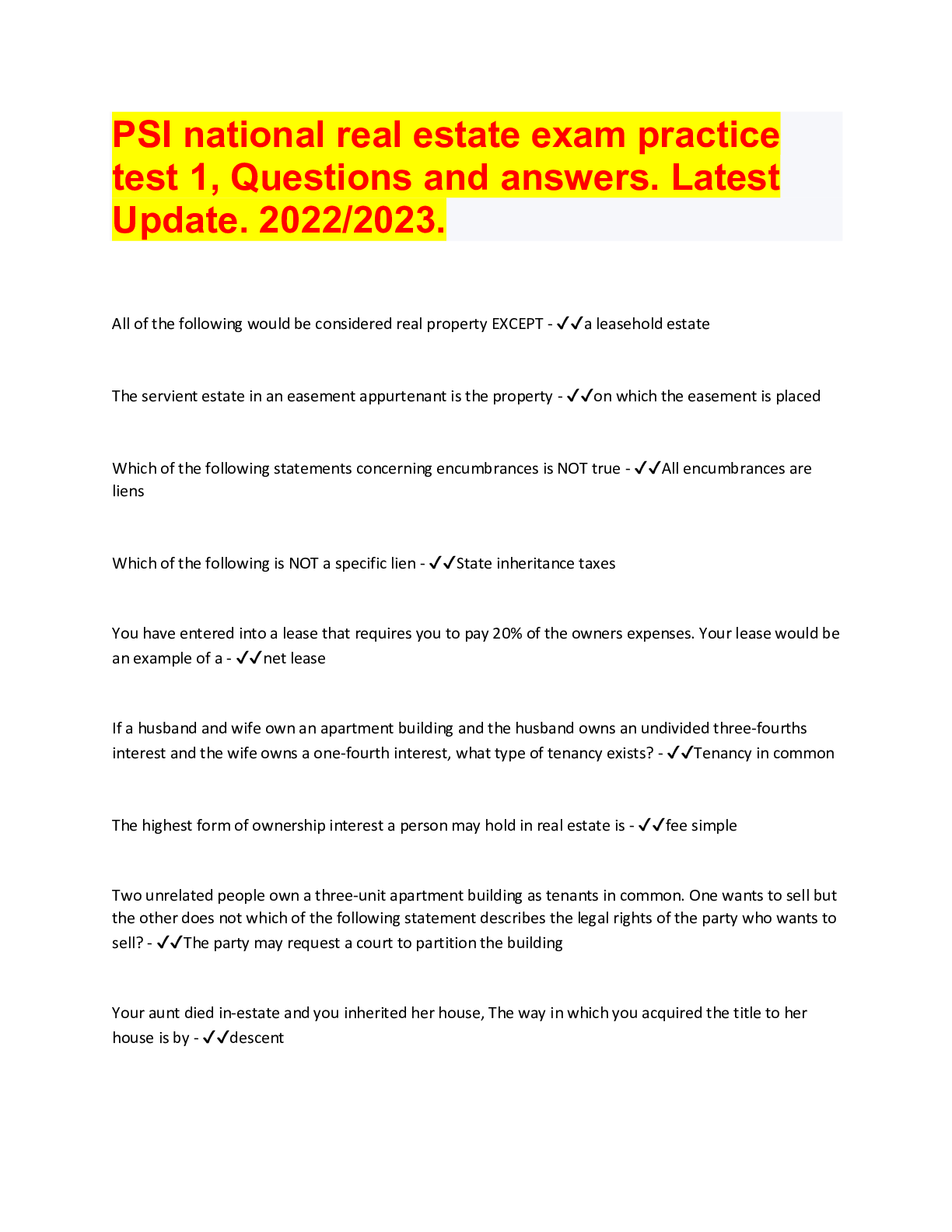







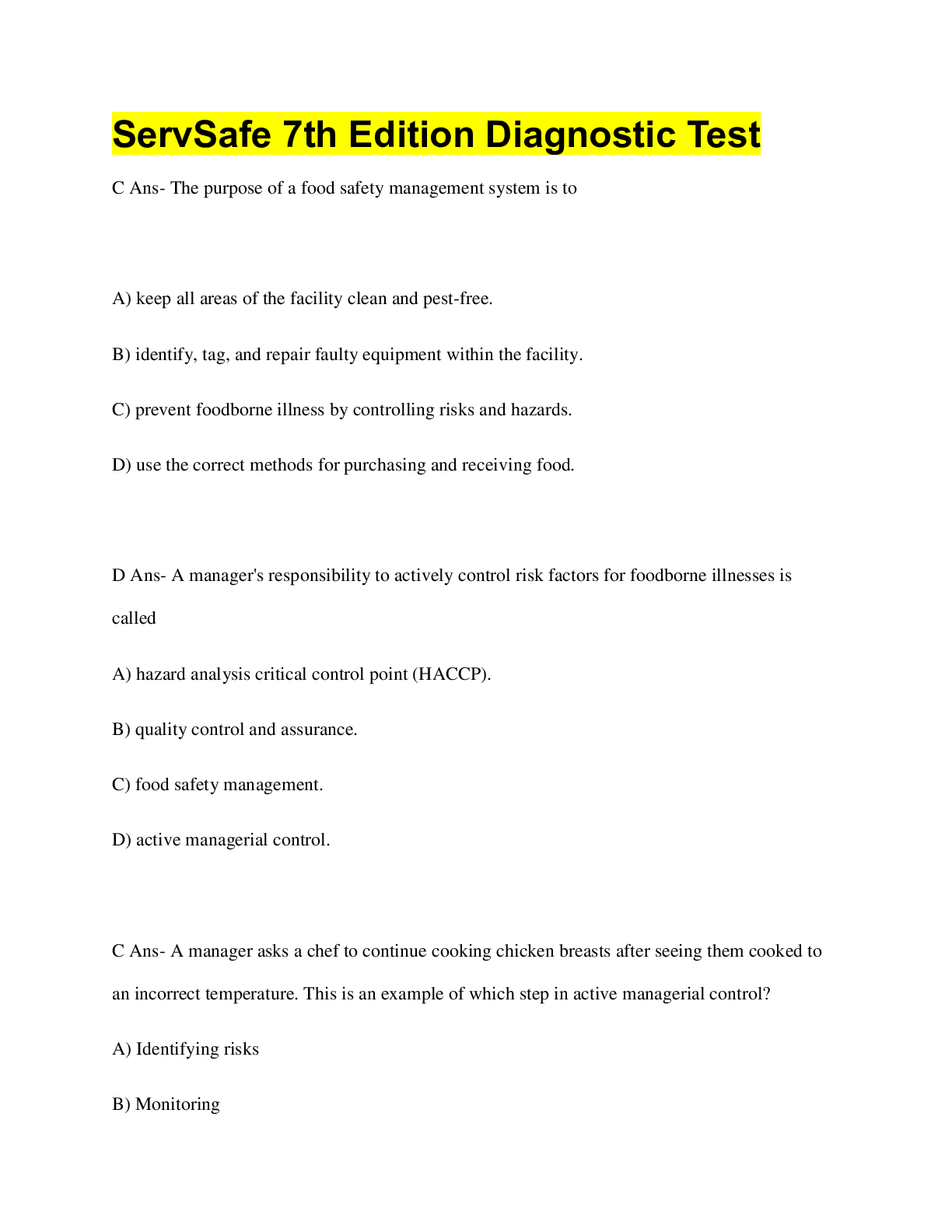
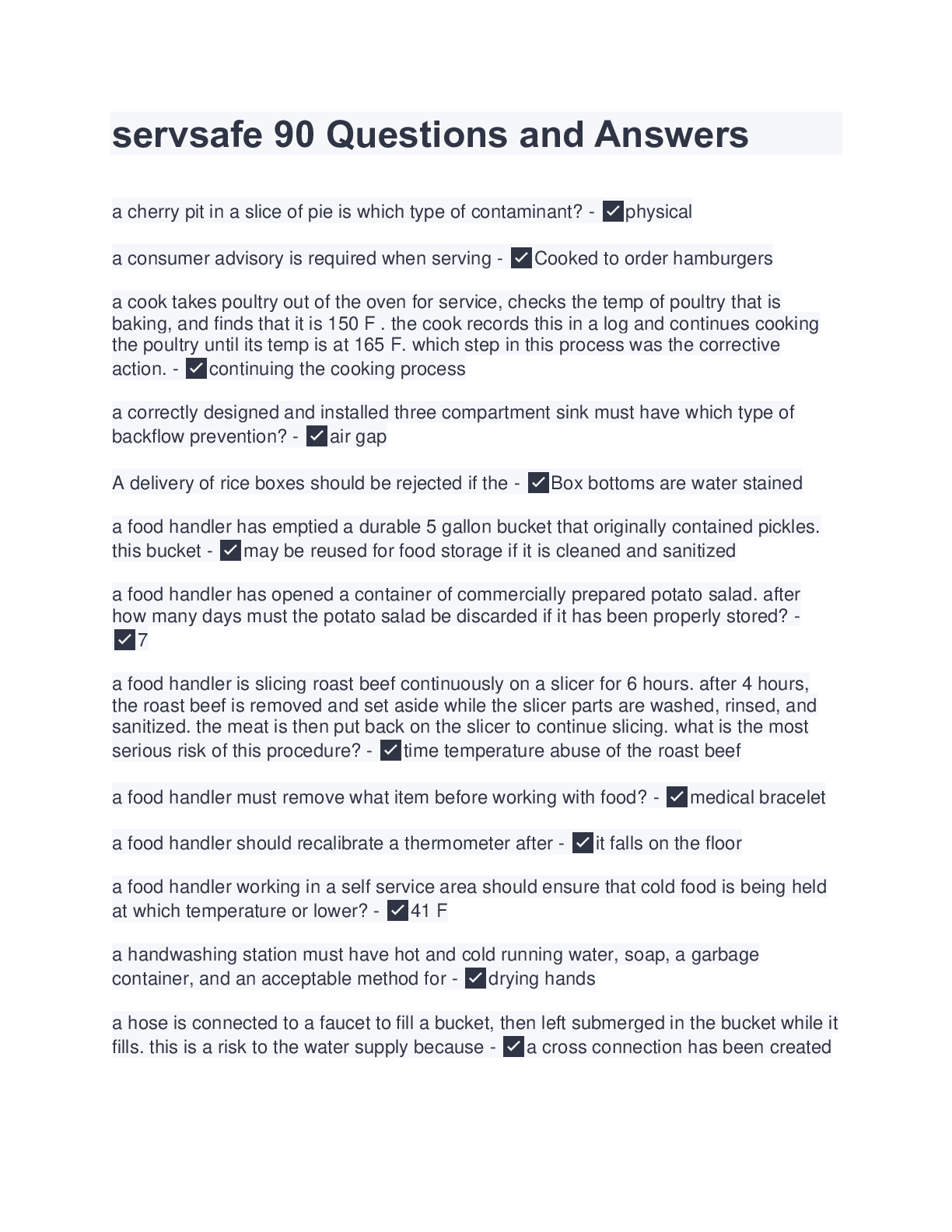
.png)







